How to Teach Digraphs
We’ve got two options when it comes to teaching a child to recognize SH, CH, TH, and WH. We can either point to SH and say, “This says Shhhh,” OR we can engage the entire child- mind, emotions, and body- in an activity that will make learning digraphs unforgettable.
The following activity ensures the child's engagement in every possible way. Let's act out digraphs! You will need five children each time you act out the skit. In my classroom, we did it several times so that every child got to have a turn. Gather your first group of children and assign each a sound: S, C, T, W, and H. Have each child say the sound their letter normally makes: Miss S would say, "S-s-s-s," for example. You could have each child wear their letter, allowing the children to see the symbols as they hear the sounds. This will reinforce sound and symbol connections. Have the children make their own letters or download these letters in solid or outlined versions.
(You can change Mr. and Miss to represent your group of students.)
Act Out This Story
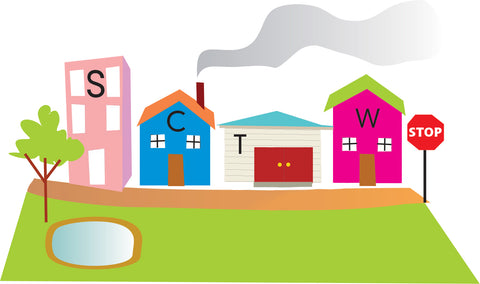
"Next, he walked up to Miss T’s door and knocked. Miss T came to the door (child will come forward saying, “T-t-t,” (as in top) while Mr. H says his breathy “hhhhh” sound) and asked her to come out for a walk. As the two set out for their walk, the funniest thing happened! They started making a brand new sound together, too! ‘TH, th, th’ was what they said.”
"Last, Mr. H walked up to Miss W’s door and knocked. Miss W came to the door (child will come forward saying, “W-w-w,” (as in was) while Mr. H says his breathy “hhhhh” sound) and Mr. H asked her to come out for a walk. As the two set out for their walk, they also made a brand new sound together! ‘WH, wh, wh’ was what they said.”
Add Body Motions & Language
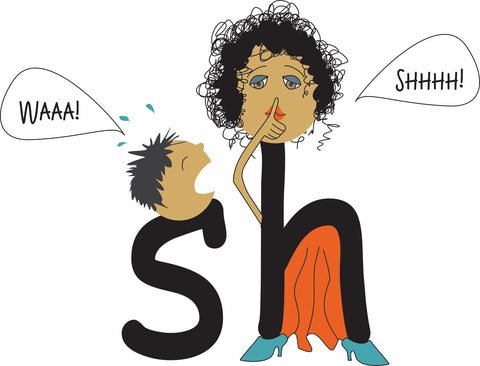
Body Motion: Hold your finger to your lips like Shirley is doing and say, “Shhhhhh,” to the crying baby.
Language: “Shirley says, ‘Shhhh,’ when baby Shay cries.”
Point out that baby Shay curled up on the rug makes the shape of an s while Shirley makes the h.
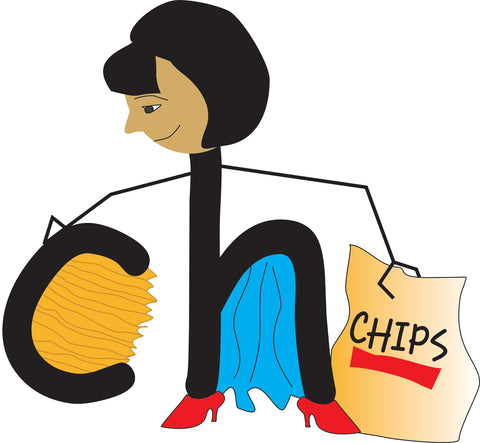
Body Motion: Make a C with your fingers, like you see in the picture.
Language: “Cherie (pronounced Cherry) loves to eat chips from the bag.”
Point out that the huge chip is the c and Cherie is the h.
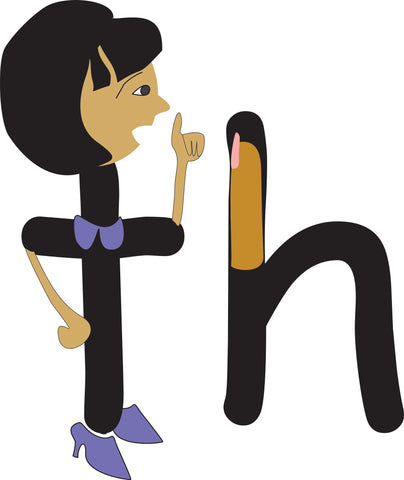
Body Motion: Be the t, doing thumbs-up with your left hand, which makes the h.
Language: “Thea can make an h with her thumb and fingers.”
Point out that this time, the girl is a t and the h is a huge thumbs up!
Also, when speaking about this digraph, you will need two lists of words.
Some make the soft TH: thin, thought, think, thank, thermos, thorn, bath, path, moth, math, both.
Some make the hard TH: then, that, those, these, there, though, them, they, their.
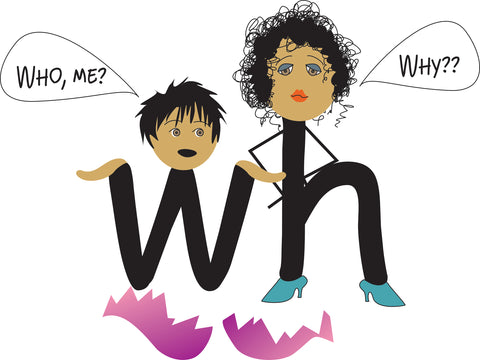
Body Motion: Be the w, holding up your arms as in the picture.
Language: “Mom asked Whitney why she broke the vase. Whitney answered, “Who, me?”
Point out that this time, Whitney is w and her mom is the h.
This digraph is said in different ways. “Who” sounds like “hoo”. “Whale” is sometimes pronounced with the breathy WH and sometimes people say, “Wale.”

For more digraph fun, try our Digraph Word Scramble!
Conclusion
Digraphs don't have to be difficult; they can be a lot of fun. Adding multisensory elements makes all the difference. Try this fun, active, and memorable learning experience today!
If you have any questions, we are here for you!



I would love to try these digraph cards in my preschool room as well as with my own children however, the link does not work. Could you send a link that works?
Leave a comment